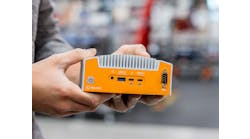In 1985, the IBM 7531 industrial PC was introduced. Some of the specs were 512 KB of RAM, Intel 80286/287 microprocessor and a real-time clock. We were all amazed.
The packaging was hardened to allow the unit to operate on the factory floor. What would come next?
It was common knowledge that consumer-based products shouldn’t be used on the floor. Power issues, temperature and vibration would be some of the enemies of consumer-grade PCs at the time. Novell NetWare was the network of choice, with DECnet/ARCnet close behind. It wasn’t until Windows 3.11 was released in the very late 1980s that networking for the masses was available. This functionality changed the way we would do things.
We all know where we have come from. In 1991 Dick Morley and company developed a parallel-computing system meant for the factory floor. Paracell was the language that supported the parallel inference machine Morley developed for Flavors Technology.
GM used this development in its paint facilities because it was fast. System integrators and machine builders for automotive had no need for this speed, but it formed a need for more power in computing.
In 2005, ISA published “Pinto's Points: How to Win in the Automation Business,” a collection of articles and columns by Jim Pinto, who said industrial automation doesn’t lead technology, but rather follows it, and that future growth will come from new direction. Was he accurate? I believe he was, and this is why.
One of the main reasons for using an IPC on a machine is the human-machine interface (HMI). Local control, edge computing or simple hardware replacement is the function most required.
But imagine an operator has a tablet around his/her neck or a smart phone which wirelessly connects to the automation control system and the HMI content is thrown up on the screen.
Voice commands could be used in some applications, but not all, so an input method may need to be enhanced since the keypads are small. Tablet interface serves this situation well.
One of the functions that I built into some of my HMI applications is the ability to direct the HMI to the proper screen when scoping out an alarm. Screen navigation is paramount to a successful HMI application in my book.
So, let’s zoom into the future of the plant floor and machine interfacing.
The functionality that we are chasing is technology-led. As a machine builder, your profit margins are thin, I would suspect; however, getting prepared to implement some of the new technologies now may prove profitable down the road.
I have always wondered why a machine provided by Company A is an island as such. End users tend to accept the technology used, such as a specific brand of PLC, which doesn’t mesh with the floor technology. Ethernet and protocols have made that easier to extract data for use in various systems. And there’s that word—data.
What if the machine builder created a cloud-based repository for the machine to fire data up to Microsoft’s Azure platform so that the company’s engineers and support people have real-time connection to that machine.
Diagnostics and predictive maintenance information could be extracted, resulting in the machine builder actually looking after his own machine. He will know when it stops working.
The paradigm that we have now is that the end user supports and troubleshoots anything on the floor. We can shift that responsibility off-site, if you will.
Now if the machine’s HMI were in the cloud and web-based, then the operator needs only a Chromebook-style interface to interact with the machine or process line.
Augmented reality is already available. The system is down. The operator puts on a headset, which interfaces with the control system and the HQ of the control developer. Based on the knowledge of where and how the system stopped, the operator or maintenance staff is guided to the issues. That’s productivity.
With third-party maintenance contracts becoming a thing for end users, this level of commitment from the suppliers could be a competitive-edge value-add for the supplier.
With productivity and profits high in the mindset of companies, the move toward current technology only makes sense, but industry is slow to move.





